Global Mobility Networks of Smart City Researchers: Spatiotemporal and Multi-Scale Perspectives, 2000–2020
Abstract
Highlights
- The global mobility network of smart-city researchers (2000–2020) is dense yet asymmetric, dominated by a few high-volume bilateral corridors.
- The system shifts from a largely U.S.-centric structure to a more multipolar configuration involving Europe, East Asia, and rising South–South exchanges (particularly within Asia).
- Mobility reflects a dual logic: territorial clustering and transregional innovation corridors, indicating geographic and institutional embeddedness.
- Spatial models show that urban “smart” performance depends on internal capacities, international inflows, and spatial spillovers across cities.
- Researcher mobility is central to shaping global knowledge hierarchies and urban innovation systems.
- Multipolar corridors broaden participation in smart-city knowledge production and redistribute influence across regions.
- Recognizing spatial spillovers underscores the interdependence of cities; policies that strengthen international collaboration and regional connectivity can enhance innovation outcomes.
Abstract
1. Introduction
2. Materials and Methods
2.1. Data Source and Pre-Processing
2.2. Complex Network Analysis
2.3. Decomposing Scientific Output Growth by Researcher Mobility
2.4. Empirical Strategy
3. Results
3.1. Multi-Scalar Patterns of Researcher Mobility
3.2. Quantifying the Mesoscale Structure of Researcher Mobility
3.3. Geographical Patterns of Scientific Growth and Mobility Contributions
4. Discussion
4.1. Re-Centralization, Multipolar Corridors and the Global City Network
4.2. Centrality, Peripheralization and Global Inequality
4.3. Spatial Spillovers and Regional Innovation Systems
4.4. Limitations and Avenues for Future Research
5. Conclusions
Author Contributions
Funding
Data Availability Statement
Conflicts of Interest
References
- Chang, Y.S.; Lee, Y.J.; Choi, S.S.B. Is there more traffic congestion in larger cities? Scaling analysis of the 101 largest U.S. urban centers. Transp. Policy 2017, 59, 54–63. [Google Scholar] [CrossRef]
- Liang, L.; Wang, Z.; Li, J. The effect of urbanization on environmental pollution in rapidly developing urban agglomerations. J. Clean. Prod. 2019, 237, 117649. [Google Scholar] [CrossRef]
- Lu, J.; Li, B.; Li, H.; Al-Barakani, A. Expansion of city scale, traffic modes, traffic congestion, and air pollution. Cities 2021, 108, 102974. [Google Scholar] [CrossRef]
- Luo, W.; Bai, H.; Jing, Q.; Liu, T.; Xu, H. Urbanization-induced ecological degradation in Midwestern China: An analysis based on an improved ecological footprint model. Resour. Conserv. Recycl. 2018, 137, 113–125. [Google Scholar] [CrossRef]
- Seto, K.C.; Güneralp, B.; Hutyra, L.R. Global forecasts of urban expansion to 2030 and direct impacts on biodiversity and carbon pools. Proc. Natl. Acad. Sci. USA 2012, 109, 16083–16088. [Google Scholar] [CrossRef] [PubMed]
- Bozkurt, Y.; Rossmann, A.; Pervez, Z.; Ramzan, N. Assessing data governance models for smart cities: Benchmarking data governance models on the basis of European urban requirements. Sustain. Cities Soc. 2025, 130, 106528. [Google Scholar] [CrossRef]
- Costales, E. Identifying sources of innovation: Building a conceptual framework of the Smart City through a social innovation perspective. Cities 2022, 120, 103459. [Google Scholar] [CrossRef]
- Huang, Y.; Xiong, N.; Liu, C. Smart city policies and corporate renewable energy technology innovation: Insights from patent text and machine learning. Energy Econ. 2025, 148, 108612. [Google Scholar] [CrossRef]
- Sugandha; Freestone, R.; Favaro, P. Social sustainability, smart cities and the Global South: Learning from the Indian experience. Cities 2025, 165, 106149. [Google Scholar] [CrossRef]
- McFarlane, C.; Söderström, O. On alternative smart cities: From a technology-intensive to a knowledge-intensive smart urbanism. City 2017, 21, 312–328. [Google Scholar] [CrossRef]
- Caragliu, A.; Del Bo, C.; Nijkamp, P. Smart cities in Europe. In Creating Smart-Er Cities; Routledge: Abingdon, UK, 2013; pp. 65–82. [Google Scholar]
- Dameri, R.P. Smart City Implementation; Progress in IS; Springer: Genoa, Italy, 2017. [Google Scholar]
- Meijer, A.; Bolívar, M.P.R. Governing the smart city: A review of the literature on smart urban governance. Int. Rev. Adm. Sci. 2016, 82, 392–408. [Google Scholar] [CrossRef]
- Mora, L.; Bolici, R.; Deakin, M. The first two decades of smart-city research: A bibliometric analysis. J. Urban Technol. 2017, 24, 3–27. [Google Scholar] [CrossRef]
- Batty, M. Inventing Future Cities; MIT Press: Cambridge, MA, USA, 2018. [Google Scholar]
- Meerow, S.; Newell, J.P.; Stults, M. Defining urban resilience: A review. Landsc. Urban Plan. 2016, 147, 38–49. [Google Scholar] [CrossRef]
- Albino, V.; Berardi, U.; Dangelico, R.M. Smart cities: Definitions, dimensions, performance, and initiatives. J. Urban Technol. 2015, 22, 3–21. [Google Scholar] [CrossRef]
- Harrison, C.; Eckman, B.; Hamilton, R.; Hartswick, P.; Kalagnanam, J.; Paraszczak, J.; Williams, P. Foundations for smarter cities. IBM J. Res. Dev. 2010, 54, 1–16. [Google Scholar] [CrossRef]
- Kitchin, R. The real-time city? Big data and smart urbanism. GeoJournal 2014, 79, 1–14. [Google Scholar] [CrossRef]
- Fabregue, B.; Portal, L.; Cockshaw, C. Using Smart People to Build Smarter: How Smart Cities Attract and Retain Highly Skilled Workers to Drive Innovation (Belgium, Denmark, the Netherlands, Poland). SSRN Electron. J. 2023, 7, 9–30. [Google Scholar] [CrossRef]
- Fitsilis, P. (Ed.) Building on Smart Cities Skills and Competences: Human Factors Affecting Smart Cities Development; Internet of Things; Springer: Cham, Switzerland, 2022. [Google Scholar] [CrossRef]
- Han, H.; Hawken, S. Introduction: Innovation and identity in next-generation smart cities. City Cult. Soc. 2018, 12, 1–4. [Google Scholar] [CrossRef]
- Ackers, L. Moving People and Knowledge: Scientific Mobility in the European Union1. Int. Migr. 2005, 43, 99–131. [Google Scholar] [CrossRef]
- Czaika, M.; Orazbayev, S. The globalisation of scientific mobility, 1970–2014. Appl. Geogr. 2018, 96, 1–10. [Google Scholar] [CrossRef]
- Liu, T.; Pei, T.; Fang, Z.; Wu, M.; Liu, X.; Yan, X.; Song, C.; Jiang, J.; Jiang, L.; Chen, J. Spatiotemporal mobility network of global scientists, 1970–2020. Int. J. Geogr. Inf. Sci. 2024, 38, 1991–2018. [Google Scholar] [CrossRef]
- Verginer, L.; Riccaboni, M. Cities and countries in the global scientist mobility network. Appl. Netw. Sci. 2020, 5, 38. [Google Scholar] [CrossRef]
- Na, Y.; Liu, X. Unveiling the core-periphery dynamics and driving factors of intercity scientific mobility in China. Habitat Int. 2025, 163, 103481. [Google Scholar] [CrossRef]
- Blondel, V.D.; Guillaume, J.-L.; Lambiotte, R.; Lefebvre, E. Fast unfolding of communities in large networks. J. Stat. Mech. Theory Exp. 2008, 2008, P10008. [Google Scholar] [CrossRef]
- Fortunato, S.; Hric, D. Community detection in networks: A user guide. Phys. Rep. 2016, 659, 1–44. [Google Scholar] [CrossRef]
- Franzoni, C.; Scellato, G.; Stephan, P. The mover’s advantage: The superior performance of migrant scientists. Econ. Lett. 2014, 122, 89–93. [Google Scholar] [CrossRef]
- Jonkers, K.; Tijssen, R. Chinese researchers returning home: Impacts of international mobility on research collaboration and scientific productivity. Scientometrics 2008, 77, 309–333. [Google Scholar] [CrossRef]
- Balland, P.-A.; Jara-Figueroa, C.; Petralia, S.G.; Steijn, M.P.A.; Rigby, D.L.; Hidalgo, C.A. Complex economic activities concentrate in large cities. Nat. Hum. Behav. 2020, 4, 248–254. [Google Scholar] [CrossRef]
- Kerr, S.P.; Kerr, W.R. Immigrant entrepreneurship. In Measuring Entrepreneurial Businesses: Current Knowledge and Challenges; University of Chicago Press: Chicago, IL, USA, 2016; pp. 187–249. [Google Scholar]
- Franzoni, C.; Scellato, G.; Stephan, P. International mobility of research scientists: Lessons from GlobSci. In Global Mobility of Research Scientists; Elsevier: Amsterdam, The Netherlands, 2015; pp. 35–65. [Google Scholar]
- Wagner, C.S.; Cai, X.; Baas, J. State-Level Representation of Chinese Scholars Mobility to and within the United States, 2009–2018. SSRN Electron. J. 2024. [Google Scholar] [CrossRef]
- Taylor, P.J.; Derudder, B. Porous Europe: European cities in global urban arenas. Tijdschr. Voor Econ. En Soc. Geogr. 2004, 95, 527–538. [Google Scholar] [CrossRef]
- Breschi, S.; Lissoni, F. Mobility of skilled workers and co-invention networks: An anatomy of localized knowledge flows. J. Econ. Geogr. 2009, 9, 439–468. [Google Scholar] [CrossRef]
- Carlino, G.; Kerr, W.R. Agglomeration and innovation. Handb. Reg. Urban Econ. 2015, 5, 349–404. [Google Scholar]
- Wagner, C.S.; Leydesdorff, L. Network structure, self-organization, and the growth of international collaboration in science. Res. Policy 2005, 34, 1608–1618. [Google Scholar] [CrossRef]
- Glass, C.R.; Cruz, N.I. Moving towards multipolarity: Shifts in the core-periphery structure of international student mobility and world rankings (2000–2019). High. Educ. 2023, 85, 415–435. [Google Scholar] [CrossRef]
- Ramos, F.R.; Uitermark, J. Has inequality grown or declined in global south Cities? Trends in occupational structure, education, and living standards. Habitat Int. 2025, 161, 103425. [Google Scholar] [CrossRef]
- Gomez, C.J.; Herman, A.C.; Parigi, P. Leading countries in global science increasingly receive more citations than other countries doing similar research. Nat. Hum. Behav. 2022, 6, 919–929. [Google Scholar] [CrossRef]
- Nielsen, M.W.; Andersen, J.P. Global citation inequality is on the rise. Proc. Natl. Acad. Sci. USA 2021, 118, e2012208118. [Google Scholar] [CrossRef]
- Connell, R. The northern theory of globalization. Sociol. Theory 2007, 25, 368–385. [Google Scholar] [CrossRef]
- Cooke, P. Regional innovation systems, clusters, and the knowledge economy. Ind. Corp. Change 2001, 10, 945–974. [Google Scholar] [CrossRef]
- Asheim, B.T.; Gertler, M.S. The geography of innovation: Regional innovation systems. In The Oxford Handbook of Innovation; Oxford University Press: Oxford, UK, 2006. [Google Scholar]
- Balland, P.-A.; Boschma, R.; Crespo, J.; Rigby, D.L. Smart specialization policy in the European Union: Relatedness, knowledge complexity and regional diversification. Reg. Stud. 2019, 53, 1252–1268. [Google Scholar] [CrossRef]
- Yao, L.; Li, J. Intercity innovation collaboration and the role of high-speed rail connections: Evidence from Chinese co-patent data. Reg. Stud. 2022, 56, 1845–1857. [Google Scholar] [CrossRef]
- Dong, X.; Zheng, S.; Kahn, M.E. The role of transportation speed in facilitating high skilled teamwork across cities. J. Urban Econ. 2020, 115, 103212. [Google Scholar] [CrossRef]
- Momenitabar, M.; Bridgelall, R.; Dehdari Ebrahimi, Z.; Arani, M. Literature Review of Socioeconomic and Environmental Impacts of High-Speed Rail in the World. Sustainability 2021, 13, 12231. [Google Scholar] [CrossRef]
- Boschma, R. Proximity and Innovation: A Critical Assessment. Reg. Stud. 2005, 39, 61–74. [Google Scholar] [CrossRef]
- Crescenzi, R.; Iammarino, S.; Ioramashvili, C.; Rodríguez-Pose, A.; Storper, M. The Geography of Innovation: Local Hotspots and Global Innovation Networks. SSRN Electron. J. 2023. [Google Scholar] [CrossRef]
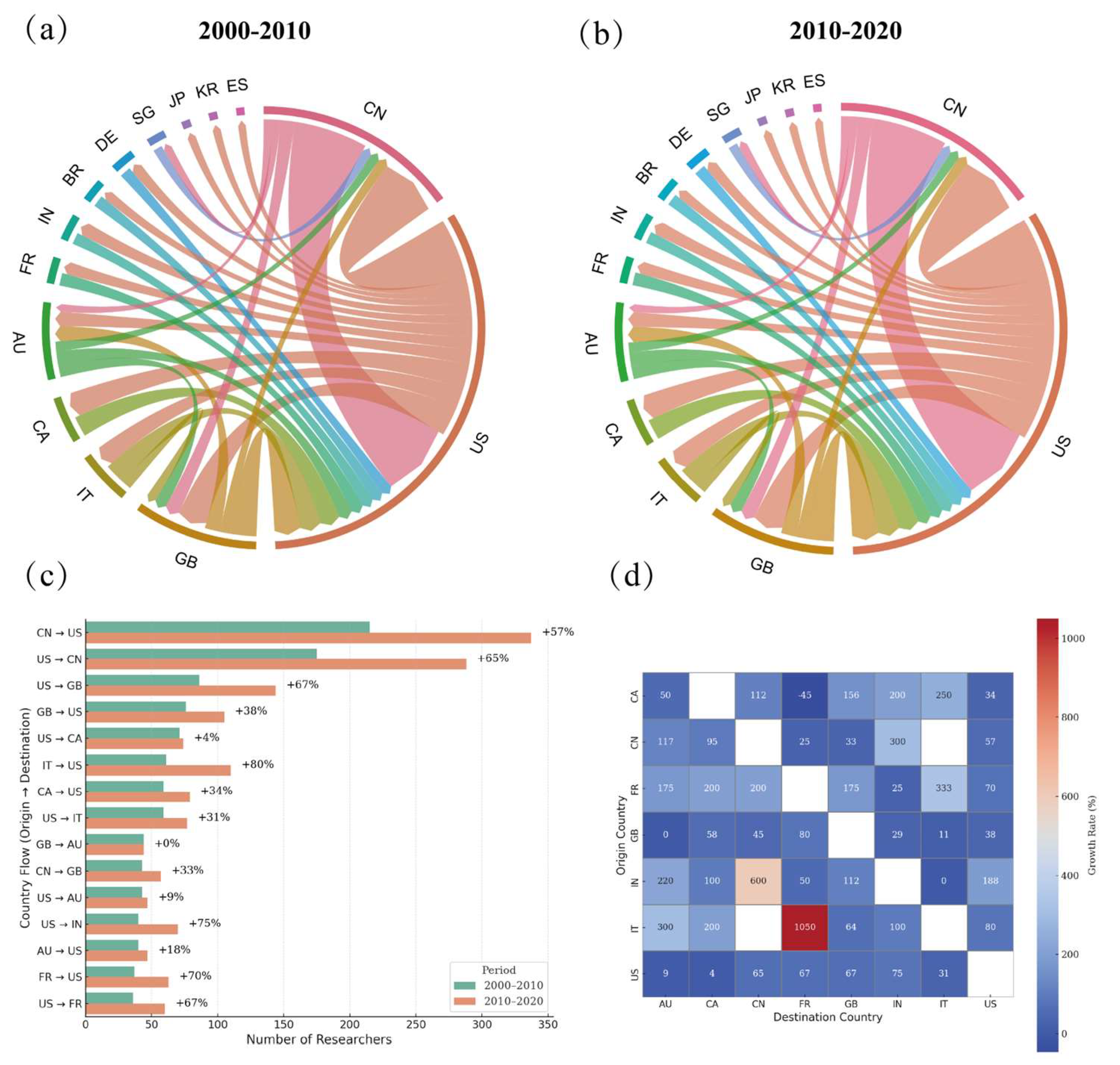
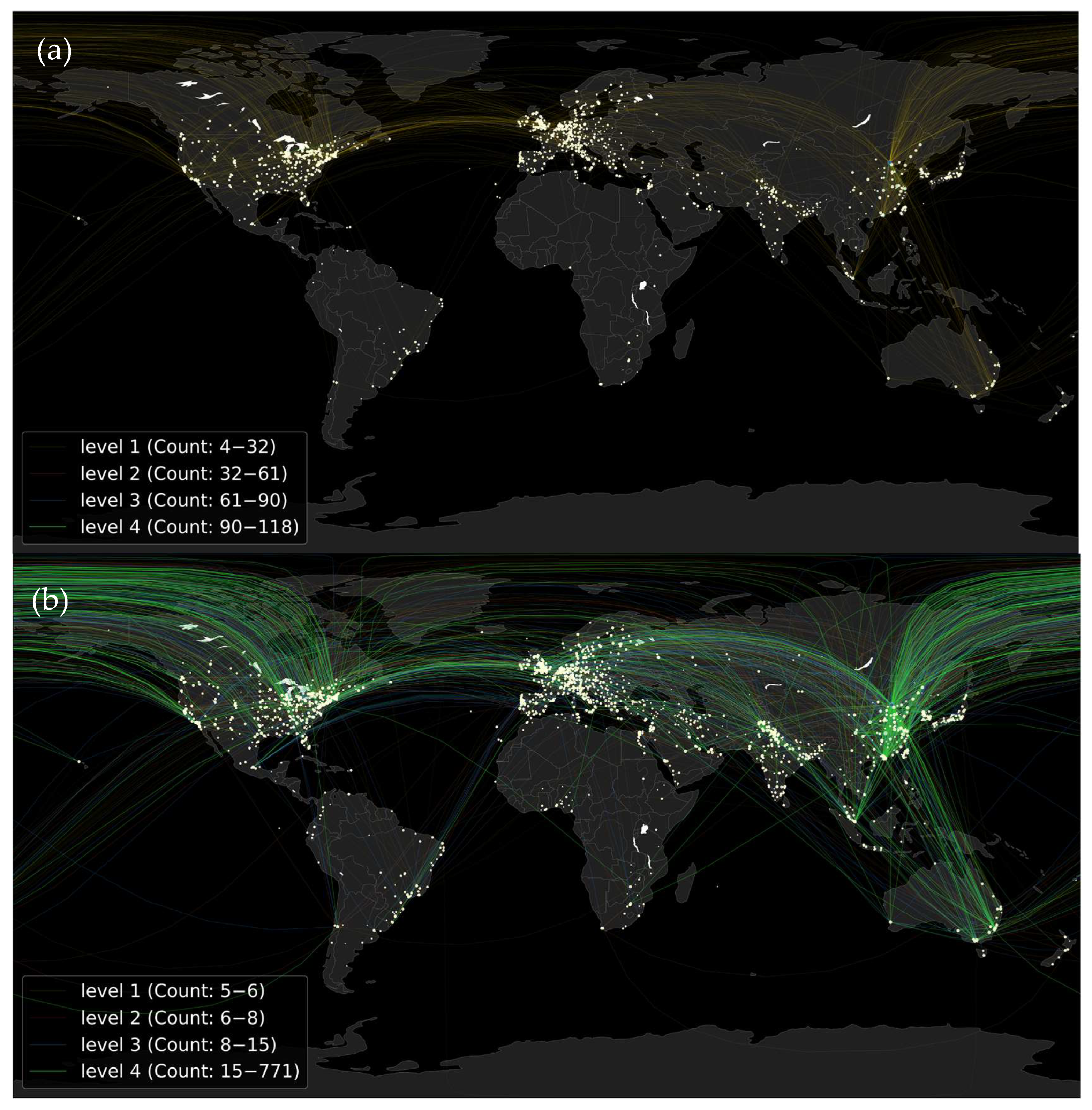
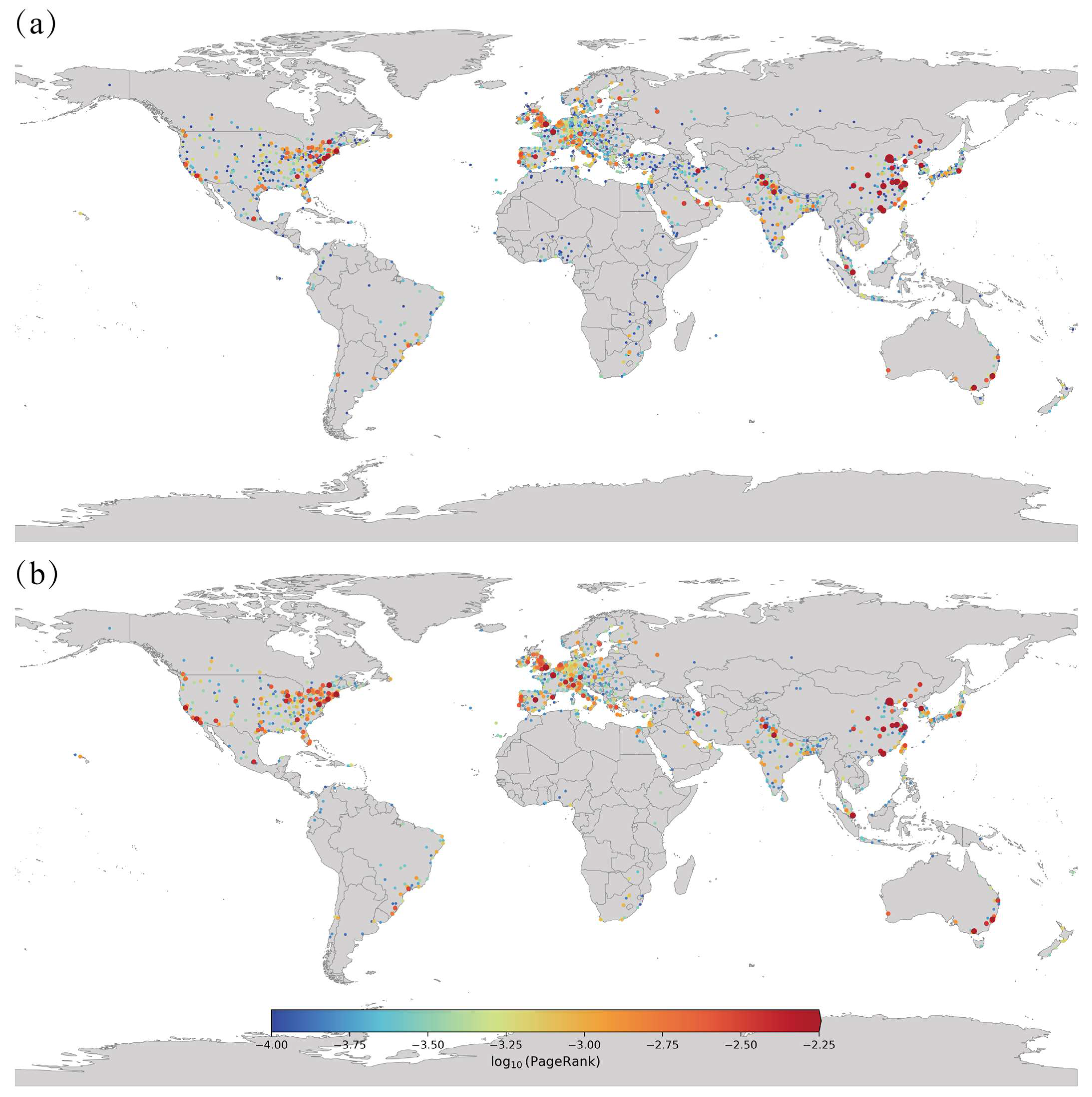

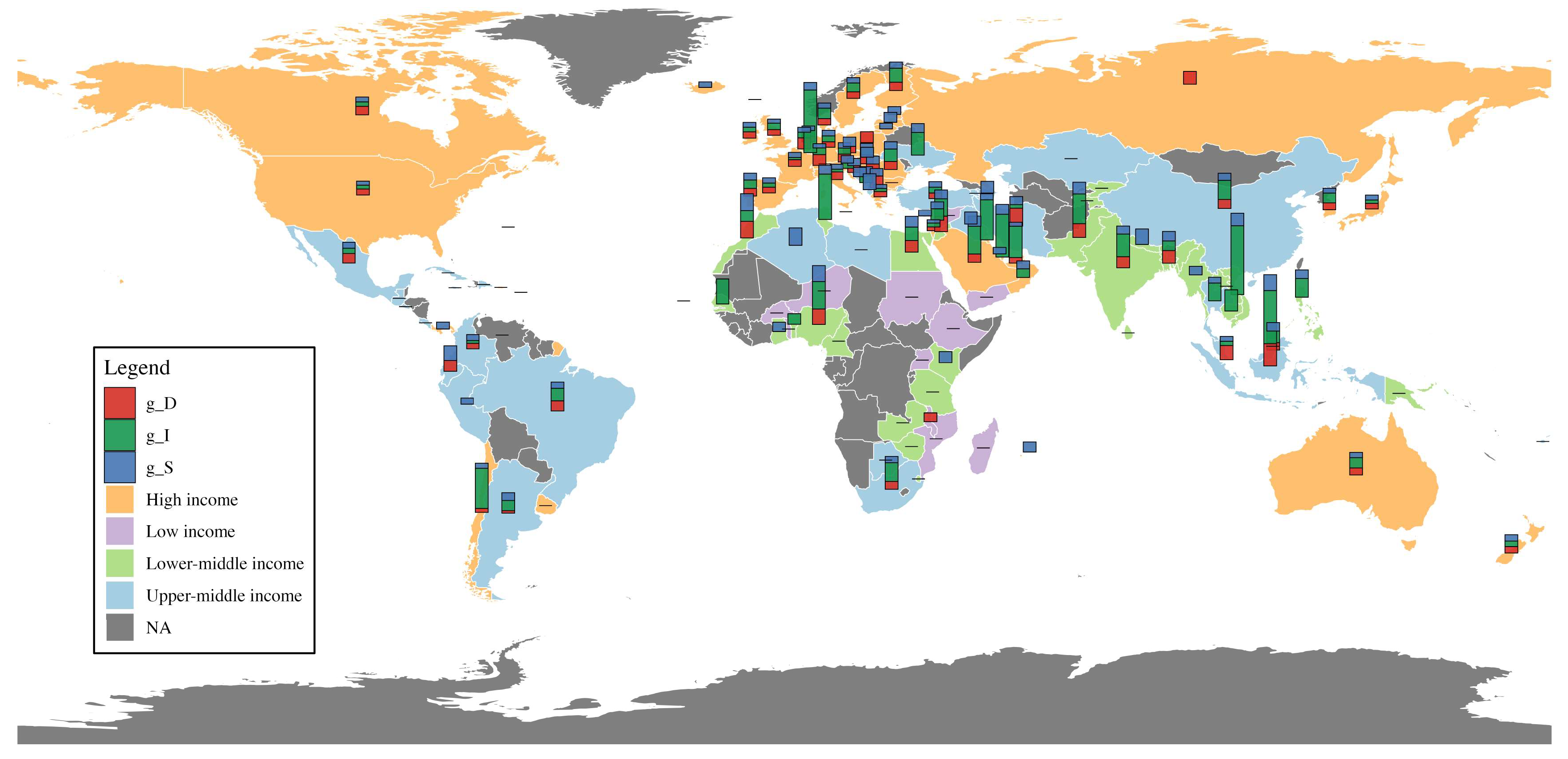
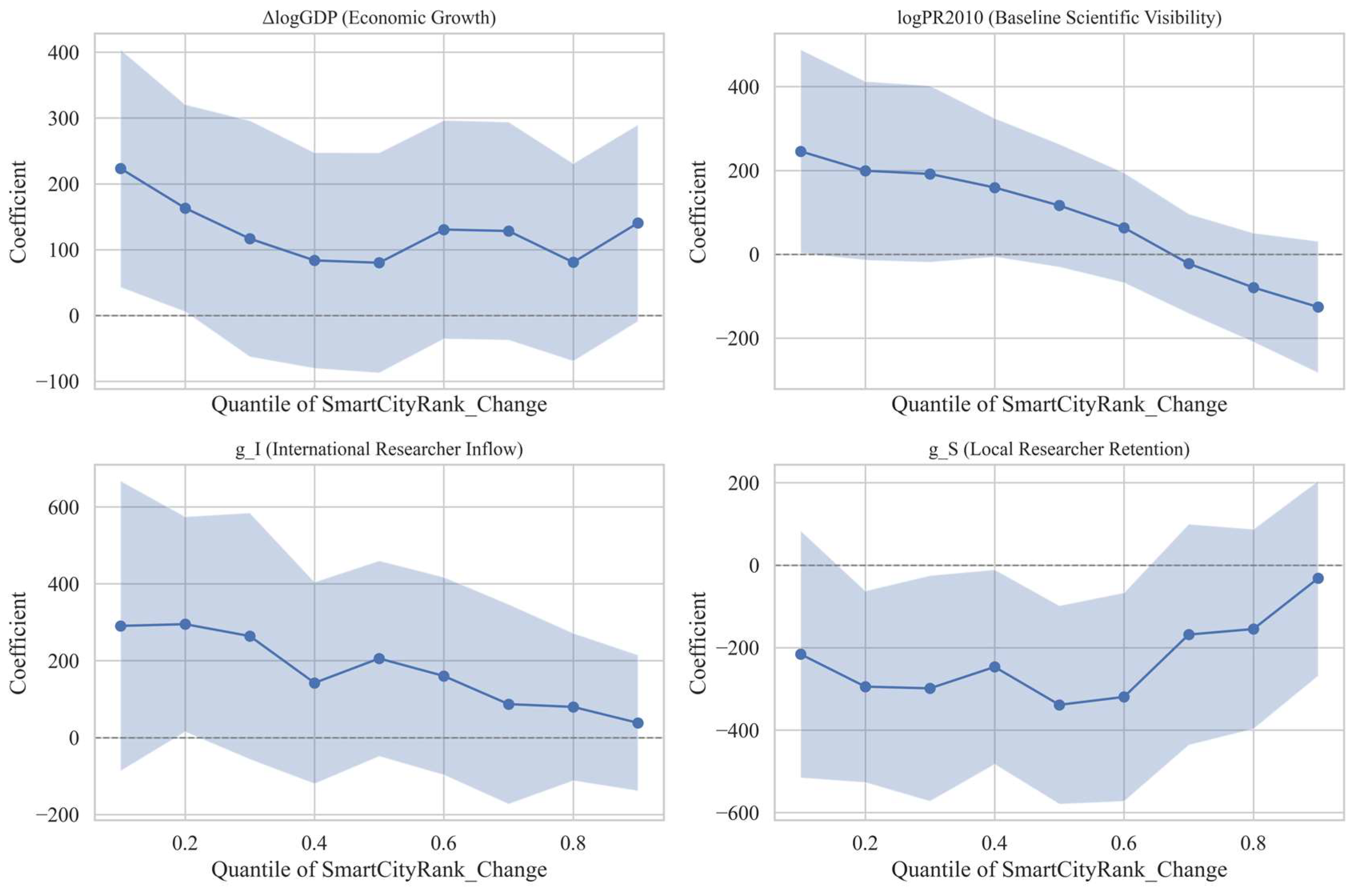
| Statistic | Value |
|---|---|
| Moran’s I | 0.163 |
| Expected I under randomness | −0.0002 |
| Variance | 0.0000413 |
| Standard deviate (Z-score) | 25.435 |
| p-value | <2.2 × 10−16 |
| Model | AIC | Log-Likelihood | Pseudo R2 | Spatial Effect (ρ Or λ) | p-Value | Notes |
|---|---|---|---|---|---|---|
| OLS | 2678.370 | −1331.185 | 0.1881 | — | — | No spatial structure |
| SAR | 2602.887 | −1292.443 | 0.4794 | ρ = 0.65234 | 0.000 | Spatial lag model |
| SEM | 2600.958 | −1292.478 | 0.0806 | λ = 0.69429 | 0.000 | Spatial error model |
| SDM | 2600.682 | — | 0.4871 | ρ = 0.84398 | 0.000 | Full spatial spillover model |
| Variable | OLS | SAR | SEM | SDM |
|---|---|---|---|---|
| ΔlogPR | −42.20 | −74.48 | −78.36 | −87.18 |
| ΔlogGDP | 148.70 ** | 106.62 ** | 190.00 *** | 73.54 * |
| logPR2010 | 168.79 * | 187.05 ** | 178.94 ** | 191.34 ** |
| logGDP2010 | 165.82 *** | 35.69 | 12.80 | 2.69 |
| g_S | −91.46 | −104.48 | −94.30 | −104.80 |
| g_D | −65.26 | 8.71 | 23.21 | 20.69 |
| g_I | 123.55 | 101.84 | 101.50 | 90.93 |
| W_Rank_Change | — | 0.652 *** | — | 0.844 *** |
| lambda | — | — | 0.694 *** | −0.296 |
Disclaimer/Publisher’s Note: The statements, opinions and data contained in all publications are solely those of the individual author(s) and contributor(s) and not of MDPI and/or the editor(s). MDPI and/or the editor(s) disclaim responsibility for any injury to people or property resulting from any ideas, methods, instructions or products referred to in the content. |
© 2025 by the authors. Licensee MDPI, Basel, Switzerland. This article is an open access article distributed under the terms and conditions of the Creative Commons Attribution (CC BY) license (https://creativecommons.org/licenses/by/4.0/).
Share and Cite
Na, Y.; Liu, X. Global Mobility Networks of Smart City Researchers: Spatiotemporal and Multi-Scale Perspectives, 2000–2020. Smart Cities 2025, 8, 159. https://doi.org/10.3390/smartcities8050159
Na Y, Liu X. Global Mobility Networks of Smart City Researchers: Spatiotemporal and Multi-Scale Perspectives, 2000–2020. Smart Cities. 2025; 8(5):159. https://doi.org/10.3390/smartcities8050159
Chicago/Turabian StyleNa, Ying, and Xintao Liu. 2025. "Global Mobility Networks of Smart City Researchers: Spatiotemporal and Multi-Scale Perspectives, 2000–2020" Smart Cities 8, no. 5: 159. https://doi.org/10.3390/smartcities8050159
APA StyleNa, Y., & Liu, X. (2025). Global Mobility Networks of Smart City Researchers: Spatiotemporal and Multi-Scale Perspectives, 2000–2020. Smart Cities, 8(5), 159. https://doi.org/10.3390/smartcities8050159







